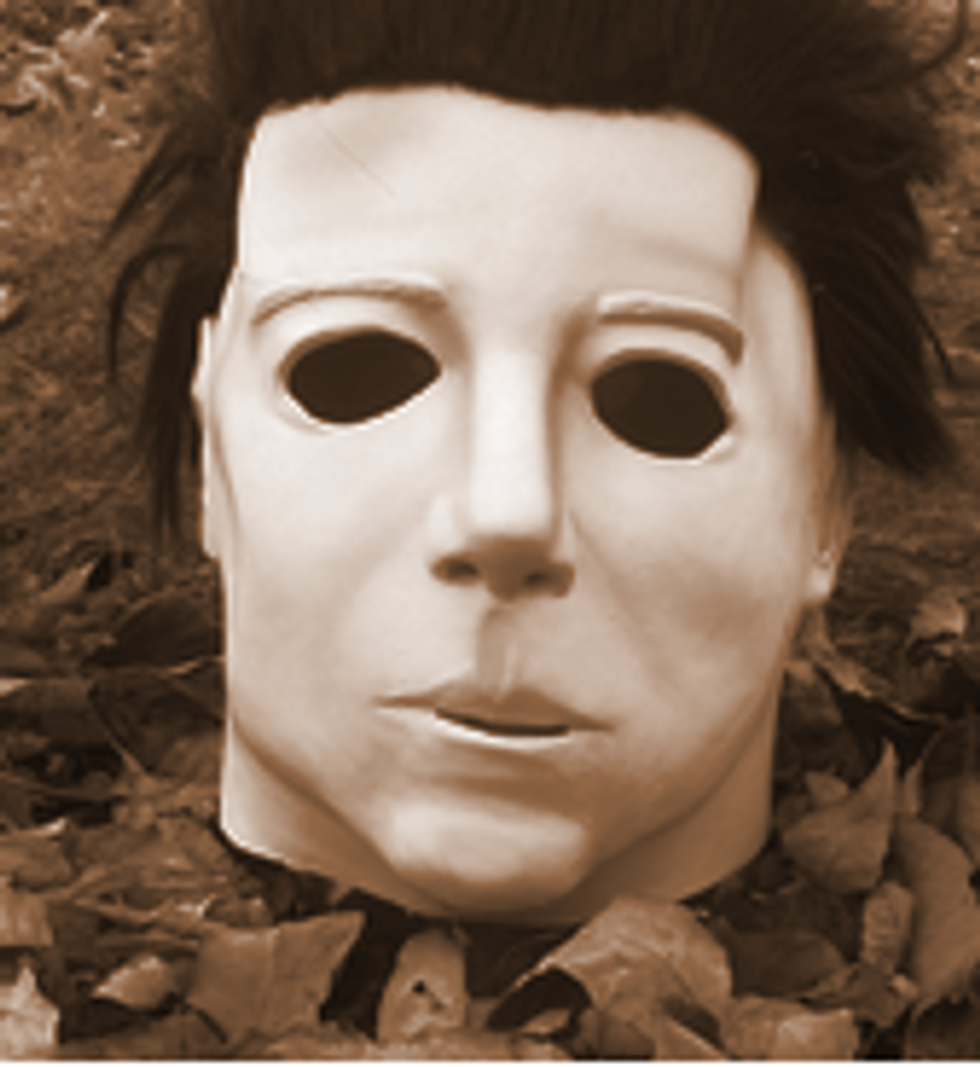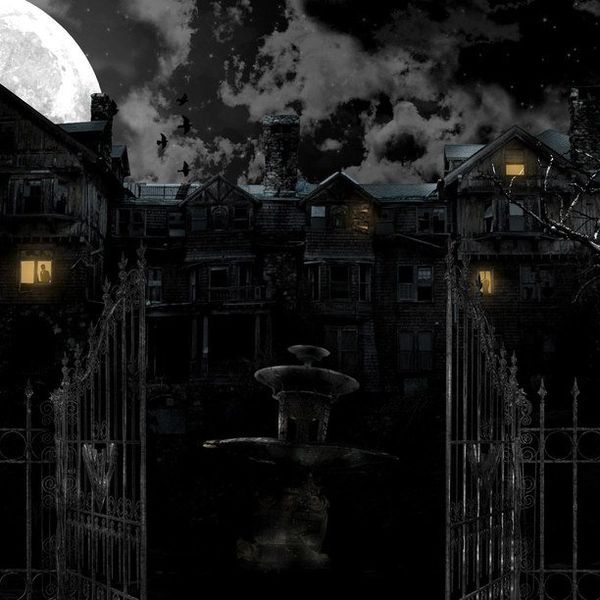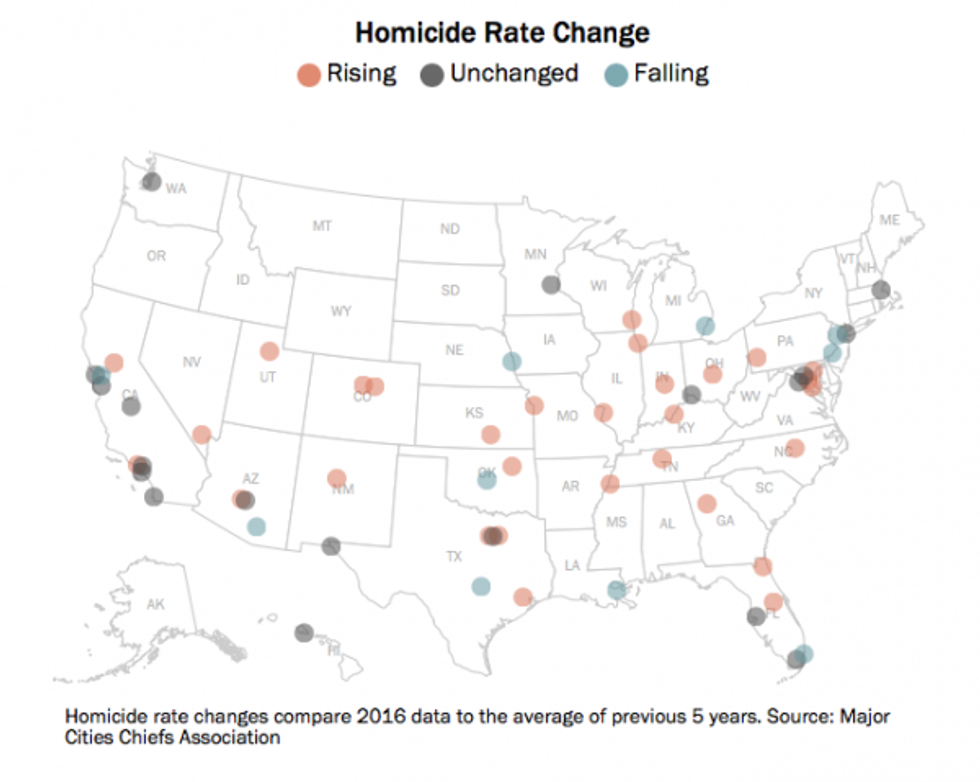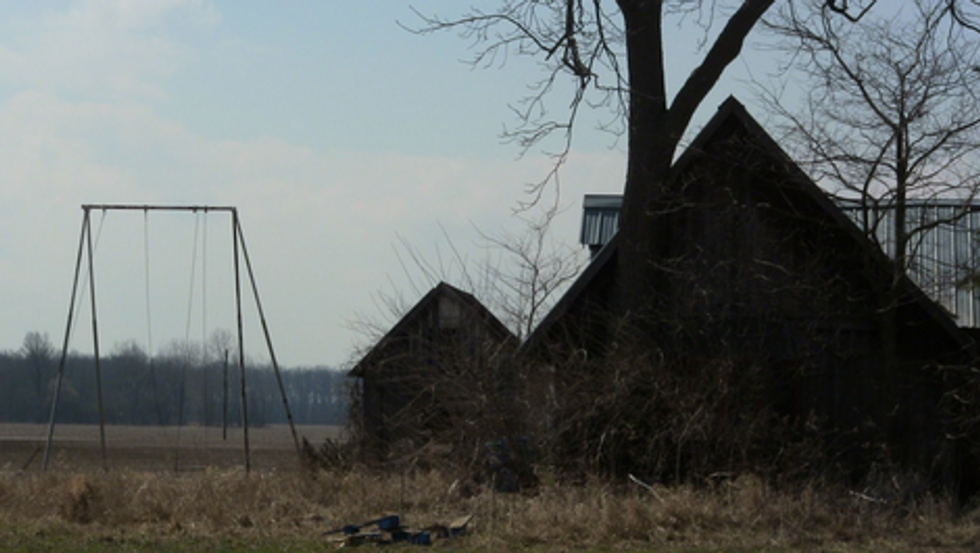Before there was Split, before there was Get Out, and before we learned not to say it or think it in the new The Bye Bye Man, directors such as Alfred Hitchcock, Tobe Hooper, Wes Craven, and many others terrified audiences and brought real fears to the cinema.
No matter what era these directors emerged in the horror world, however, they all faced the judgment of parents and critics alike. Each one has been blamed for the rising violence in our society because of the movies they bring to audiences.
According to a TIME article, a New York University study found the 2016 murder rate to be up 16% from 2015 in U.S. cities. To blame these movies for this violence is unjust, however. Those who bring these violent films to the silver screen are merely reflecting real life violence.
Horror History
Horror is most likely an unfamiliar subject to most people. Some of the first horror movies were silent films such as The Phantom of the Opera (1925), The Hunchback of Notre Dame (1939), and The Devil’s Castle (1896). These films experimented with monsters with warped figures and madmen. Famous horror figures such as Frankenstein and Dracula were introduced with sound in movies.
Soon after, the living dead made their first debut in the 1932 film White Zombie. All three of these figures have survived the decades, in addition to werewolves, demons, and phantoms. Then Alfred Hitchcock stepped into the spotlight. In 1960, the infamous Norman Bates took to the screen in Psycho. Based off the novel by Robert Bloch, Psycho was one of the first killer movies. It reflected real-life killer Ed Gein, who is considered the first serial killer. Thus, a new branch of horror was born; the slasher film.

Popular in the 70s and 80s, the original The Texas Chain Saw Massacre is considered the first real slasher movie. Slasher movies began to take over the theaters with Black Christmas (1974), Halloween (1978), Friday the 13th (1980), and, later, A Nightmare on Elm Street (1984).
Slashers reigned supreme until people grew tired of the same old rules; don’t drink or do drugs, don’t have sex, and never say “I’ll be right back.” The slasher genre seemed to be fading out forever. However, director Wes Craven released Scream and brought slasher films to a new generation in 1996, breathing life into the genre once more. Thanks to Scream and other slashers of the age, the slasher genre lives on even today in the form of new movies and remakes.
Why Do We Need Horror?
Even though horror movies have a long history, many people still think that people who watch horror movies are crazy. That is true according to horror author Stephen King, who believes that we are all crazy deep down inside our darkest corners. In his essay Why We Crave Horror Movies, he asks the question, “Do we crave seeing people sliced and diced on the screen?”
Therefore, if we are all even just a little crazy, we would need a way to let out some of that craziness. Horror movies give people a chance to relieve their inner craziness in a safe manner without committing actual violence.
Norman Holland, who specializes in the psychology of the arts, believes that “we turn to literature, to stories, poems, plays, or movies, in order to have our emotions stimulated, even in unpleasurable ways.” These movies will continue to be present in cinema because we need that release. Otherwise, we truly will go insane.
Horror gives the audience a way to see their darkest thoughts on the screen. They feel as if they are living it out with the characters in the movie. This then purges those who see horror films of wanting to do violent things because it is as if they already did it by watching the horror picture. Even Aristotle wrote that we like tragedies in theater because they are a way "to purge us of pity and terror.” In the same way, horror films can be an outlet for people, preventing them from committing violence in the real world.
If believing every single person is insane is too extreme, here is a simpler way to look at what horror does for its audience: it just gives us the rush we need to stay away from the actual violence. Many of us need to feel extreme stimulation, live dangerously. It gives us pleasure. Jeffrey Goldstein, who has a Ph.D. in psychology and is the professor at Utrecht University, believes that we like horror movies because it is a “safe scare.”
A safe scare is something that scares us, but cannot actually harm us or anyone else. It is much like riding a roller coaster or rock climbing. It is important that we get these safe scares so we don’t feel the need to do that ourselves. Safe scares are also helpful to many people. Some horror movie-goers like the movies because of the rush it gives them.
The rush helps them forget about their own troubles for a while. People who are under more personal (such as unemployment, separation/divorce, or loss) or social (the homeless, poor, or those who have low social status) stress are more likely to be violent towards others, according to the Harvard Health Publication “Mental Illness and Violence.” Similarly, horror fans want to see violent movies because it is their way of dealing with their own fears.
Think about it this way: imagine a fear. It could be spiders, sharks, dying, or heights. Now think about watching a movie in which a character has that same fear. The fear confronts this character, and in turn it also confronts the viewer. When the character defeats the fear in the end, it feels as if the viewer has beaten the fear too. Because the fear is “beaten” through the movie, the fear is eased some because it does not seem quite so scary.
Horror movies cannot create violence because those that do violent acts have a mental problem. Movies don’t create the violence inside one’s self. Most people who have watched horror movies are not willing to redo what they see on the screen. People who have already toyed with the idea of committing a violent act actually do these things.
For example, children who already had high stress levels and aggression experienced the correlations between actual violence and violence in games. The same is true with movies. If one is incredibly stressed and can be violent at times, then watching a scary movie can give a person ideas to do these violent things; using bombs, knives, or guns are all some of these ideas.
The horror movie doesn’t create the madness inside of one’s self because it is already there, whether it be in the form of stress or something else.
It Happened Before
Dylan Klebold, 17, and Eric Harris, 18, arrived at Columbine High School in Littleton, Colorado, guns in hand. They injured over twenty people and killed thirteen before shooting themselves on April 20, 1999. According to the History channel’s article “Columbine High School Shootings,” it was the worst school shooting in its day, sparking several debates over the student’s motivation and gun control safety.
Before the Columbine high school shootings, Eric Harris wrote about Charles Manson, a murderer who was in jail, guns in schools, and Nazi culture for class essays as stated in the article "Columbine Killers’ Words Released.” More recently, in Aurora, Colorado, James Holmes met with several mental health professionals preceding the shooting of several people at a movie theater.
All of these men had mental issues long before they made the decision to shoot people. Horror movies did not create those monsters. Another example is Adam Lanza, who was the shooter at Sandy Hook Elementary School. "Sandy Hook Elementary Shooting: What Happened?” reported that 20 six and seven year olds and six adults were killed when he broke into the elementary school. He then shot himself in a classroom according to police reports.
Before he shot those kids, adults, and his mother, Lanza became obsessed with violent events such as the Columbine High School massacre. Lanza gathered pictures, video games, stories, and created a spreadsheet of mass murders. Lanza was obviously had a mental problem preceding his tragic deed. He did not have to go and watch a horror movie to get all of these ideas. They were already present, hidden deep inside him.
What the Experts Say
Still not convinced? The fact is people don’t do things that go against their inner selves because they saw it in a movie or played it in a video game. According to psychologist Stanton E. Samenow, the amount of violence within a person is based on their personality. That’s not to say that if someone enjoys horror movies, they have a violent personality. Maybe the person is just stressed and that is how they relieve their stress. Or, perhaps a person is a daredevil.
Many of those that enjoy horror movies like to see their fears on the screen. Overall, many psychologists agree that it is clear that a person’s personality is a major factor in violence within.
Horror Teaches Good Morals
Would it be surprising to learn that Saw, a very violent film directed by James Wan, was a good way to teach people morals? Jigsaw, the protagonist of the Saw movie franchise, is dying of cancer. He puts his victims into such horrible situations so they will begin to appreciate the life he could never have because of his illness.
All horror movies are teachers of good, respectable morals. “The final girl in these little morality tales is the person who has embodied the moral code that society thinks allows you to go forward in life,” says Sean S. Cunningham, writer and director of the original Friday the 13th in the documentary Going to Pieces: The Rise and Fall of the Slasher Film.
Just consider it. If you were to watch characters murdered on screen, and those that were killed were doing things that are morally wrong, people wouldn’t want to do those things. Your subconscious may tell you that you’ll be the next victim if you do something morally wrong.
For example, in John Carpenter's Halloween, the killer Michael Myers slaughtered the teens that had premarital sex, but the ones who didn’t survived the film. Therefore, the movie is teaching its audience not to do that because it is wrong; the lesson

In addition, horror movies teach society not to commit violence. Fictional violence in general teaches people that those who kill are punished. If one commits violence under certain circumstances, such as defending one’s self or another against an attacker, then it is okay. That is the only time violence is okay, and that is what horror movies preach to viewers.
Take John Carpenter, director of Halloween and The Ward, for example. As Carol Clover (a professor at the University of California at Berkeley) explains in the documentary entitled The American Nightmare,“he [John Carpenter] kills these teenagers [in his movies] and he kills especially the ones who engage in illicit sex or drink too much. These films have been called Puritanical and in an odd way they are.” This is true of many other horror directors as well. It is the standard in a slasher film; it is one of the “rules.”
Even some scientists, including Steven Pinker, a Johnstone Family professor in the Department of Psychology at Harvard University, say that people in America are at the lowest risk yet even though we see so many violent movies; people become less and less violent as they see more and more violent material.
We become decreasingly violent because we see what happens to those of us who are violent. Beneath all of the blood and guts, horror movies are teachers. They tell us to stick with our virtues, otherwise something gruesome could occur.
It's in Our Media
If we, as a nation, are concerned with violence in our horror movies, we should also be concerned with the violence that is in our backyards and familiar neighborhood. Horror movies can’t take all the blame when we have videos and images from wars, crimes, and other violent things on our local news almost every night.
Children and adults alike hear about murders, rapes, and theft right in their own towns. It is disturbing to just see those images, but even more when it’s actually happening to people viewers may know. Why, then, do horror films get blamed for the terrible acts of violence when the directors of these movies are taking actual events and putting them into their movies?
Wes Craven said, “I think the basis of most of my films is essentially true life... I have found a lot of really compelling stories just in newspapers or books. The Hills Have Eyes, The Serpent and the Rainbow, The People Under the Stairs, even A Nightmare on Elm Street came from newspaper articles” during an interview for the Masters of Horror documentary.
He goes on to say in Going to Pieces: the Rise and Fall of the Slasher Film, “I get that question all the time, you know, ‘Where do you get those ideas?’ And I just, read the front page of the New York Times. Pick any day, you know? And now we have a war going on where people grab people and chop their heads off right in front of the video camera and send it out to the world.”
Other directors, producers, and writers for the genre agree. "Real life causes this, fake life does not cause it," John Carpenter said to a Tribeca Film Festival panel on violence on the big screen. "The reason for a lot of these movies is the culture that we live in, the events that have gone on in our world." Executive producer of the Saw franchise, Peter Block, and Jim Steyer, chief executive officer of Common Sense Media, a group whose goal is to “clean up” the entertainment for children, both agree.
In Going to Pieces, Carpenter reflects on a news story that was particularly horrible: “It was in New York, and she was getting murdered and set on fire outside an apartment building. And everybody inside, they didn’t come and help her. And it was a deadening of the spirit.”
Amy Holden-Jones, writer of Beethoven and writer/director of The Slumber Party Massacre, adds, “That was very prevalent in the 80s. There was a lot of serial killer publicity and a lot of sense of children being kidnapped. The villain was real, the villain was not supernatural. The villain was a human being and a human being was a scary as it could get.”
Everything was bigger in the eighties, when the slasher genre really took off. The violent newscasts of the time were no exception. The same is true for today’s newscasts as well.
The director of film studies at the University of Pittsburgh and author, Adam Lowenstein, puts it best in the documentary The American Nightmare: “You do kind of want to say to yourself [when watching these films] ‘Well, it’s only a movie, right?’ But it’s a moment like this in [The] Last House [on the Left] where I really think it’s so painful that you realize that well, you know, what’s going on here isn’t only a movie. What’s going on here has everything to do with things like Kent State [shootings], with things like the Vietnam War, that this kind of pain isn't just a kind of sick, isolated episode. This pain that I’m watching has everything to do with the world that I live in.”
The Unanswered Question
The question we are left with is if we remove all slasher films, will we still have violence? The answer is a resounding yes. As John Carpenter puts it, “Censorship never works, you cannot destroy an idea. You can hide, you can try to cover it up, but you can't destroy it, it will be there and it will bubble up again.” Slasher films will be in the cinema because they reflect the bloody world we live in.
“The world itself has such horrific elements to it that the criticism of any director that they went too far is, to me, totally bull****,” Wes Craven said in the Masters of Horror documentary. Tom Savini, special effects makeup artist, explains in Going to Pieces that his “grandson, for example, seeing not how pleasant shooting somebody can be, but how horrible and ugly, you know? It should be a turn-off.”
Amy Holden-Jones shared a similar sentiment, stating, “I think in the eighties there was a new perception that the enemy was ourselves, that the worst possible enemy was another human who had gone crazy and whose motive was not rational, who could just come out of the blue and kill you.”
That perception rings true today. Unfortunately there is no bullet proof way to prevent horrific events such as the Sandy Hook shootings because people who do these things can find inspiration everywhere, not just in horror films. The next time someone says films like Split, Get Out, The Last House on the Left, or Halloween are responsible for the next violent catastrophe, people need to remember, horror films reflect our world with all of its dark corners.
References
Information from the paragraph regarding the history of slasher movies is courtesy of the book entitled A Cinematic History of Horror by Mark Wilshin, an online article called “The First 5 Zombie Movies Ever Made” by Wendy Brock, and an online article titled “From Nosferatu to Jigsaw: A Look at the History of Horror Films” by V. Renée. In the following paragraph, the quote from Stephen King’s essay is courtesy of this online article by Lawrence Rubin, as well as some information in the following paragraph and information regarding Steven Pinker. Norman Holland’s article can be found here. Aristotle’s quote was found in Thomas Scheff’s article “Can Fear and Grief be Pleasurable?” Other information was gathered from Lucy O’Brien’s “The Curious Appeal of Horror Movies.” The next paragraph consists of information from Stuart Fischoff’s “Hollywood, Halloween, and Horror Movies- A Killer Formula,” Margarita Tartakovsky’s "Why Some People Love Horror Movies While Others Hate Them,” and Tibi Puiu’s “Why Do Some People Love Horror Movies?” Information from Fischoff’s article can also be found in the eleventh paragraph. Information in the eighth paragraph is from Stanton E. Samenow’s article “Watching Violence in the Media Does Not Cause Crime,” and “Violent Video Games and Movies Causing Violent Behavior” by Eugene Beresin. Beresin’s article was also used in paragraph sixteen. The facts about James Holmes were gathered from the CBS News article, "James Holmes Saw Three Mental Health Professionals before Shooting.” The information about Adam Lanza is courtesy of this Fox News article. In paragraphs fourteen and fifteen, some information presented was found in “The Storytelling Animal: Does Fictional Violence Lead to Real Violence?” by Jonathan Gottschall. The quotes from John Carpenter (unless otherwise specified) and other information in the eighteenth paragraph was from Michelle Nichols’s “Horror Movies Don’t Cause Violence: Director.”























